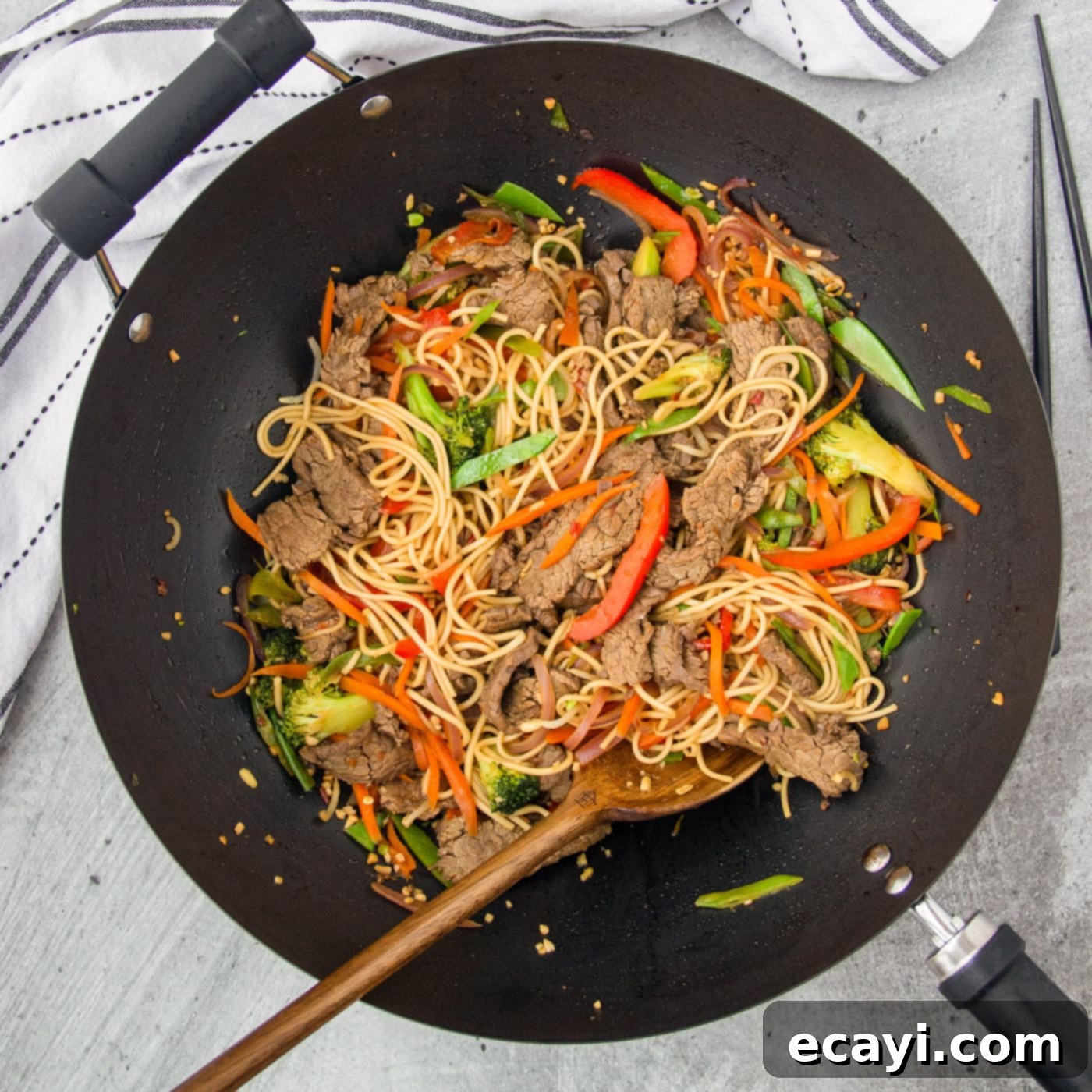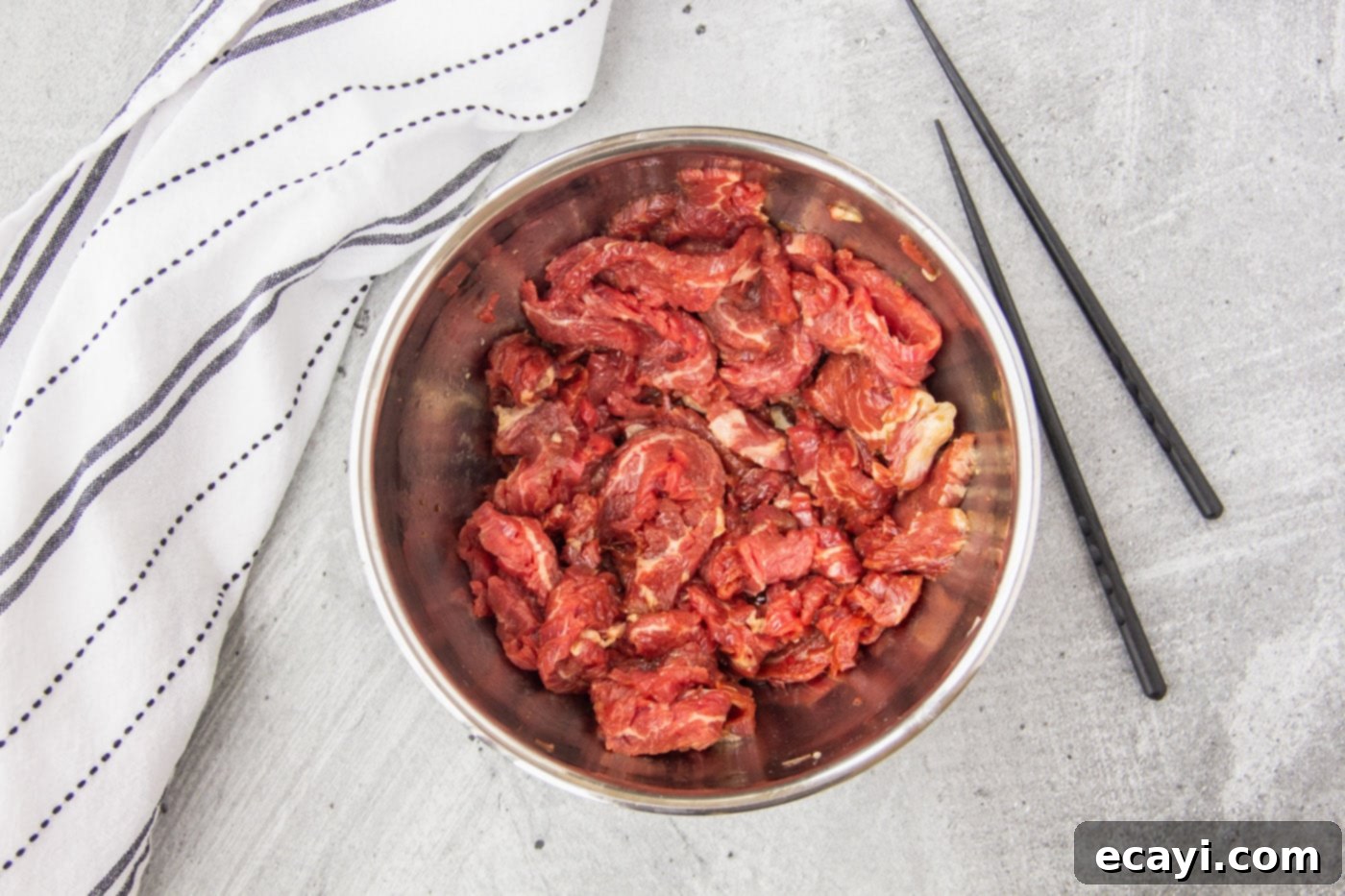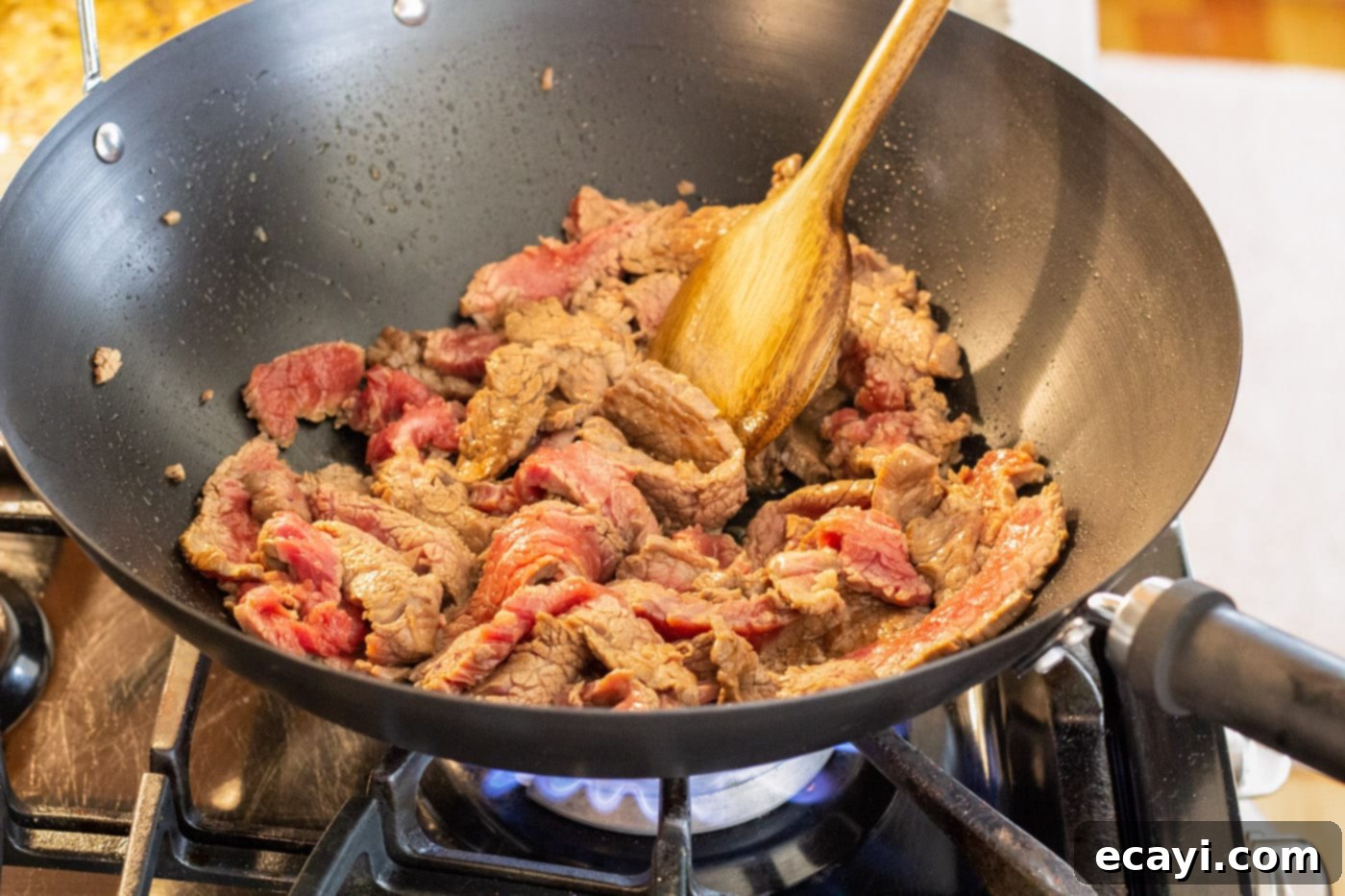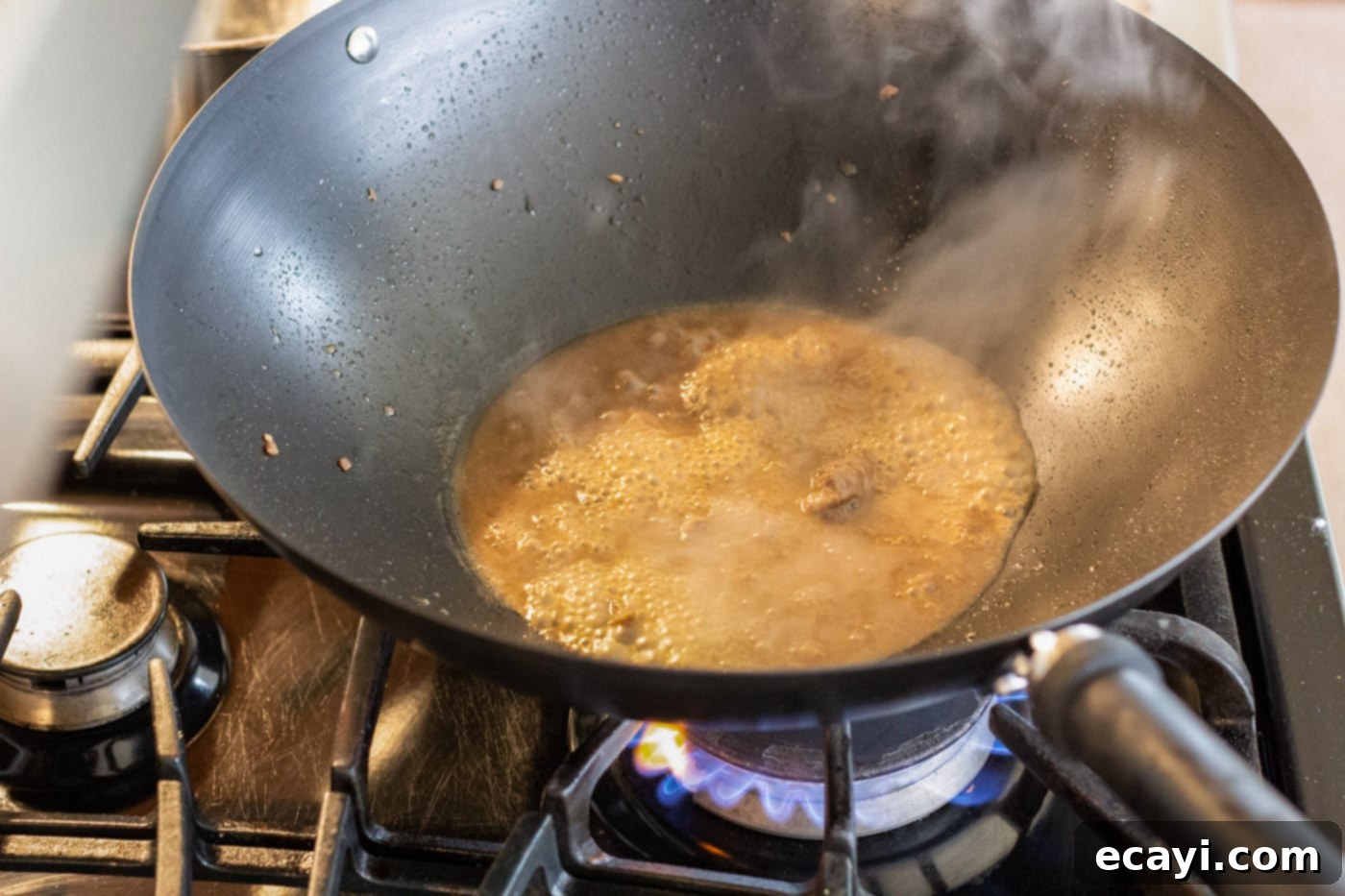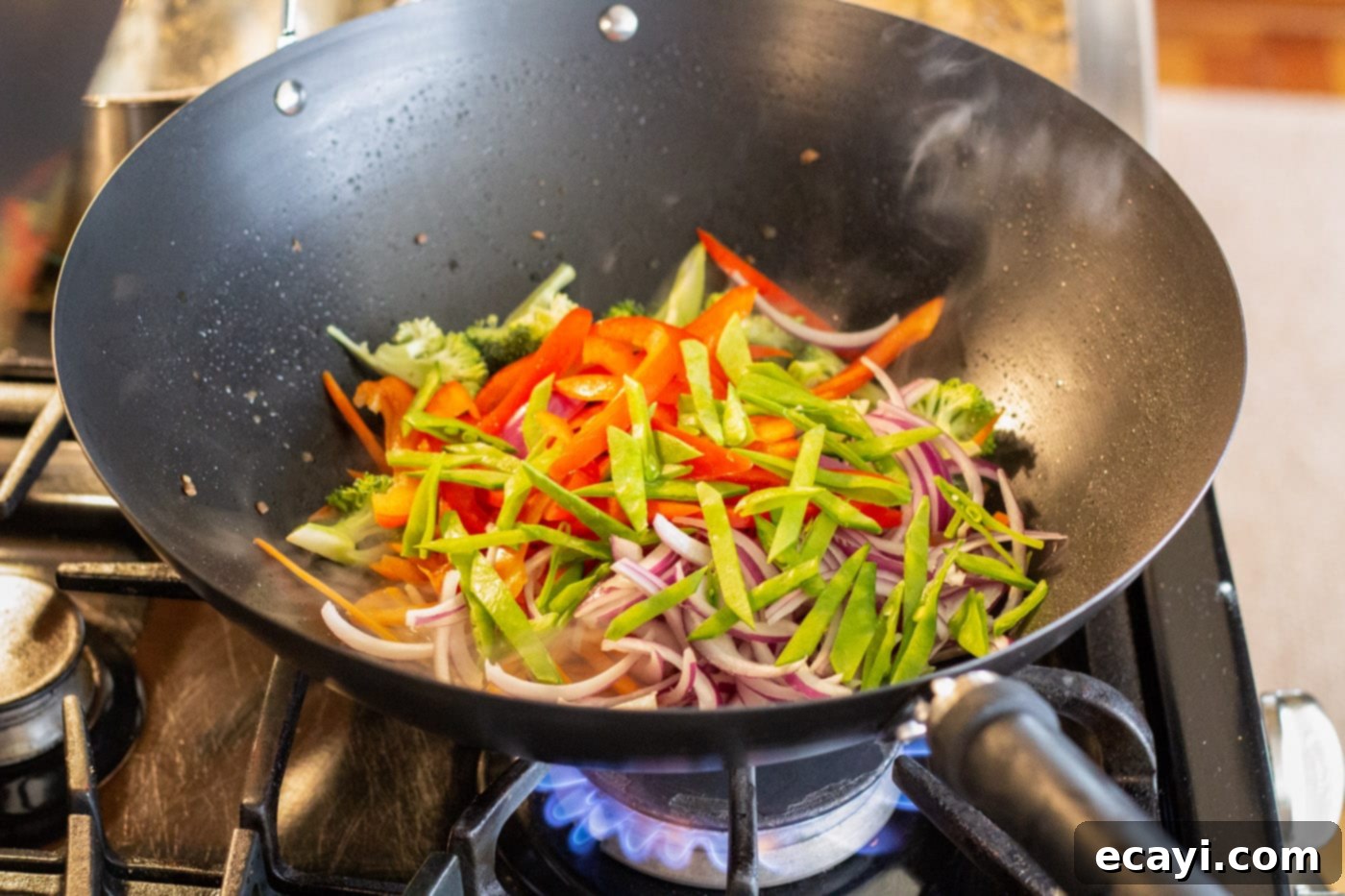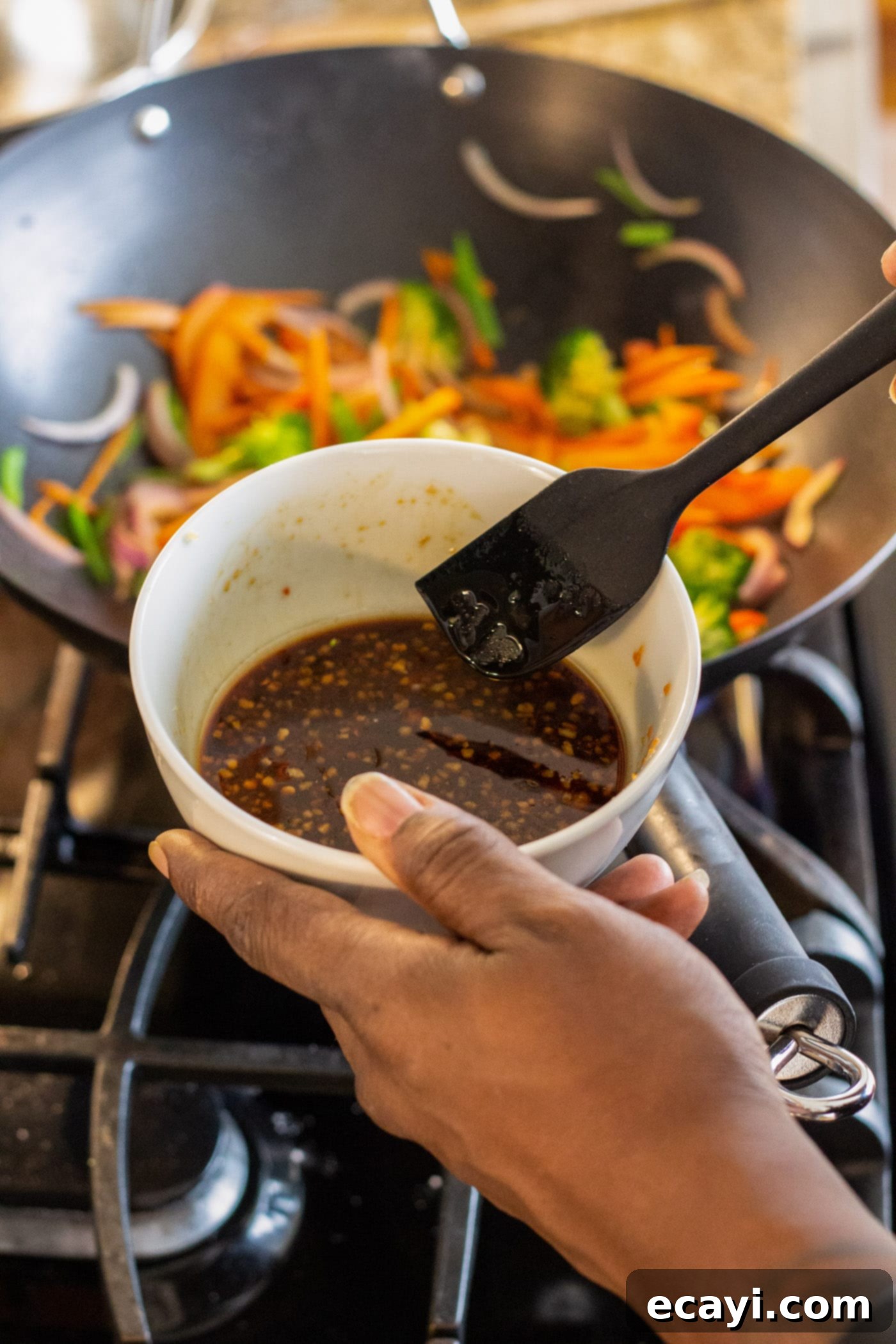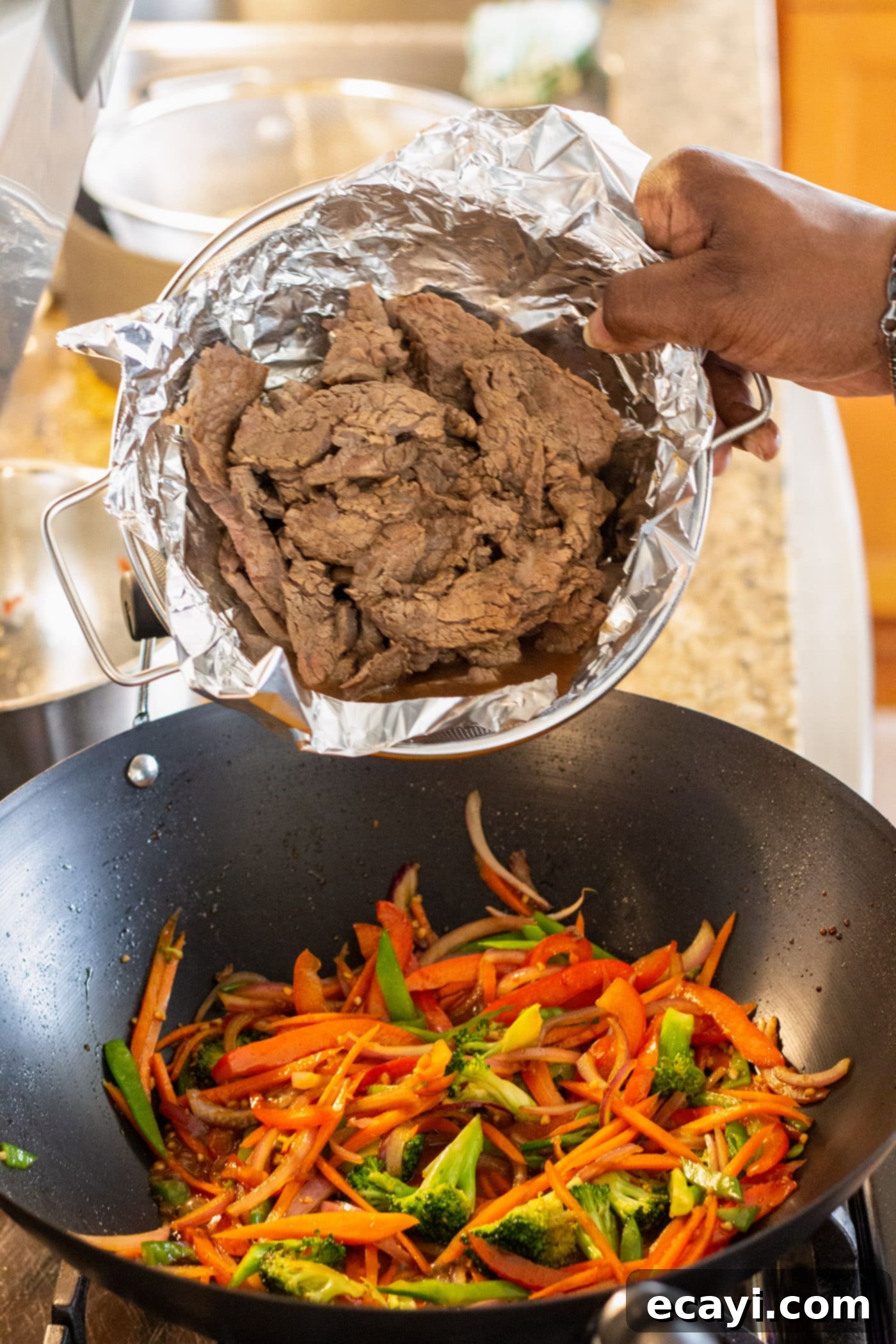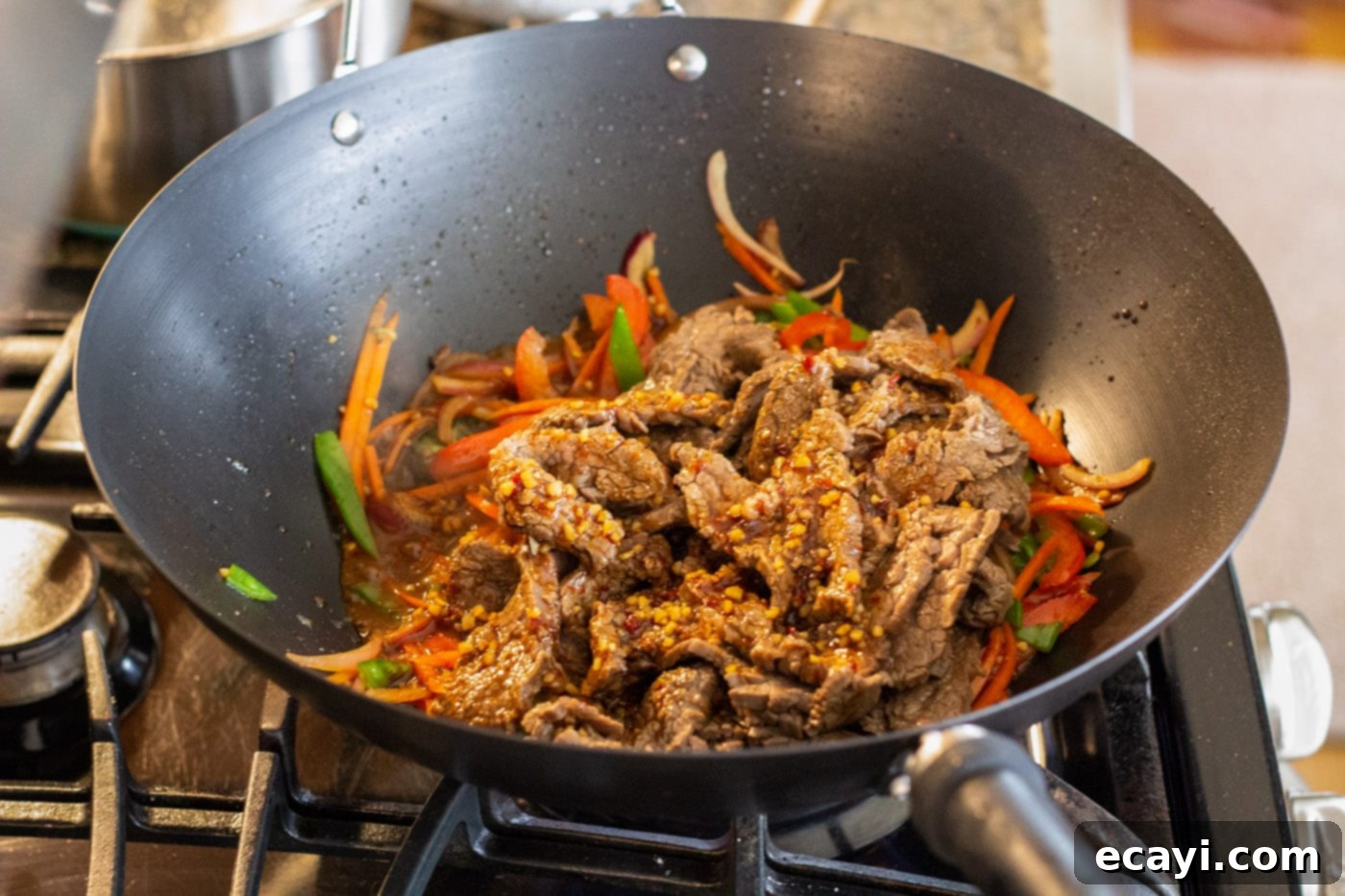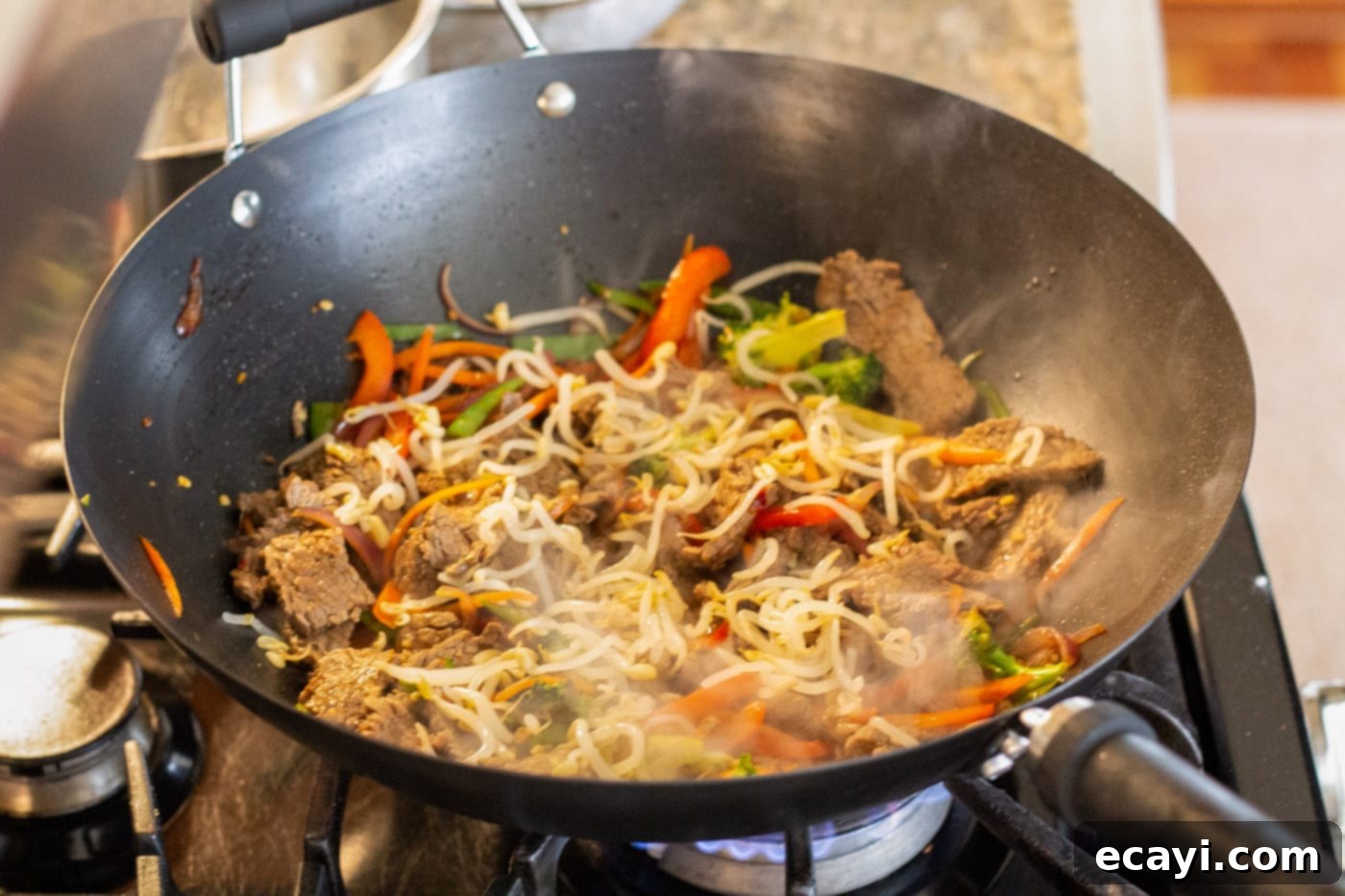Homemade Beef Lo Mein: Skip the Takeout for This Flavorful & Easy Recipe
Craving the satisfying taste of your favorite Chinese takeout right at home? Look no further than this incredible Beef Lo Mein recipe. It perfectly recreates that beloved experience, featuring tender strips of beef, a vibrant medley of stir-fried vegetables like crisp carrots, colorful bell peppers, sweet red onions, delicate snow peas, and fresh broccoli florets. All these delicious components are expertly tossed with classic lo mein noodles and coated in a rich, savory, and perfectly balanced homemade sauce that will have your taste buds singing.
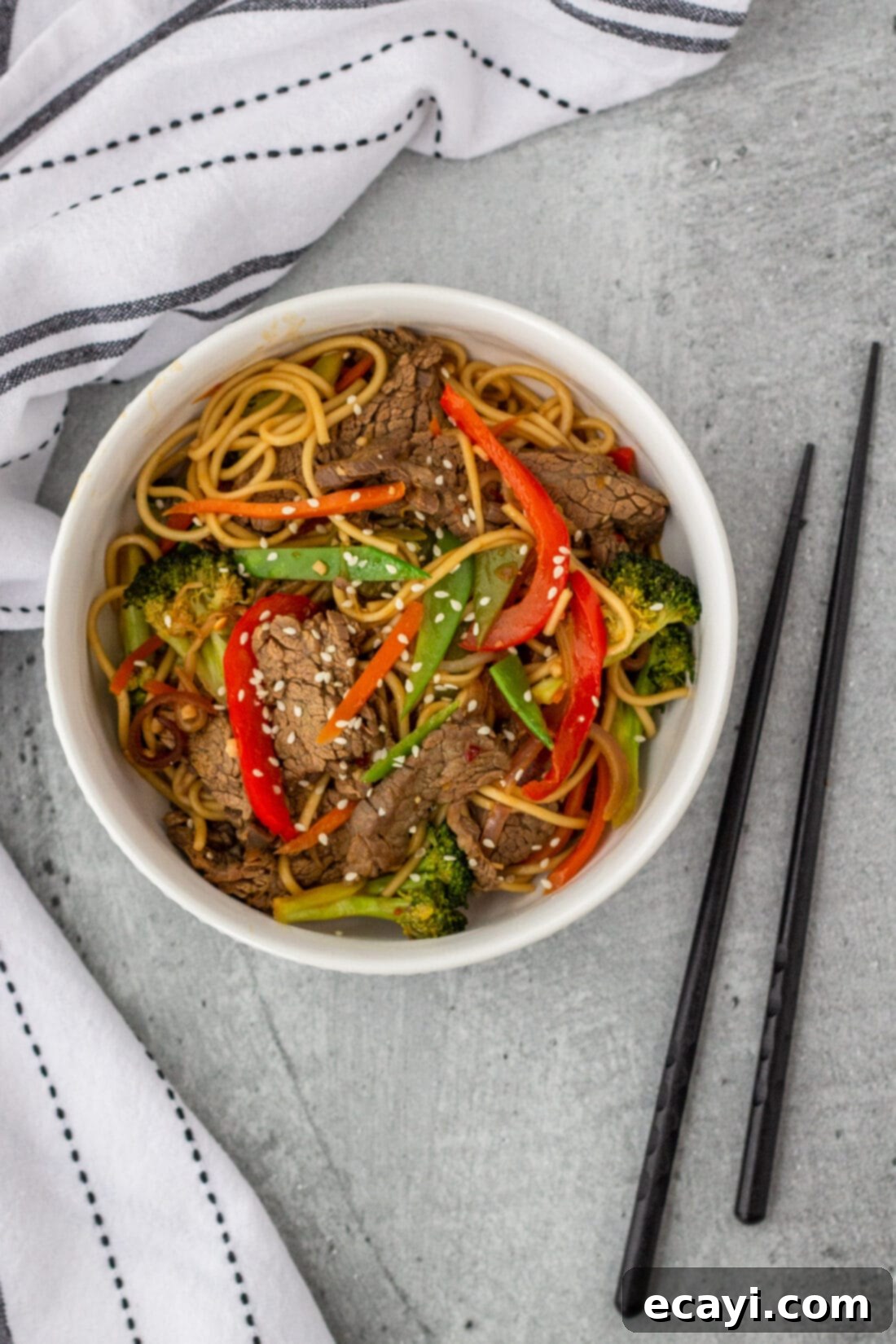
Making beef lo mein at home is not only a rewarding culinary adventure but also allows you to control the quality of ingredients and tailor the flavors to your exact preference. Forget waiting for delivery and enjoy a fresh, hot, and incredibly delicious meal that’s surprisingly easy to prepare. This recipe is designed for both novice and experienced cooks, promising a fantastic result every time.
Why This Homemade Beef Lo Mein Recipe Is a Must-Try
This beef lo mein recipe stands out because it masterfully combines fresh, wholesome vegetables with succulent, thinly sliced beef and authentic lo mein egg noodles, all brought together by an irresistible sauce. It’s a consistently popular dish for many compelling reasons, primarily its robust flavor profile and comforting texture. When you make it yourself, you unlock a new level of freshness and customization that often surpasses what you get from a restaurant.
The magic lies in the homemade lo mein sauce, which is a harmonious blend of bold Asian flavors. Fresh ginger and garlic provide an aromatic foundation, while soy sauce delivers rich umami depth. A touch of brown sugar balances the savoriness with a subtle sweetness, and chili garlic sauce adds a gentle, exciting kick. This carefully crafted sauce coats every strand of noodle, every tender piece of beef, and every crisp vegetable, ensuring a symphony of flavor in every single bite. The process itself is incredibly simple, relying on quick stir-frying techniques that preserve the vegetables’ vibrant colors and satisfying crunch.
We absolutely adore recreating our favorite takeout dishes in our own kitchen. Just like our beloved Mongolian beef recipe, this homemade beef lo mein consistently proves that DIY versions can often turn out even better than anything you could have imagined. You get to choose leaner cuts of meat, organic vegetables, and control the sodium and sugar levels, making it a healthier option without compromising on taste. Plus, the aroma filling your kitchen as this dish comes together is an added bonus!
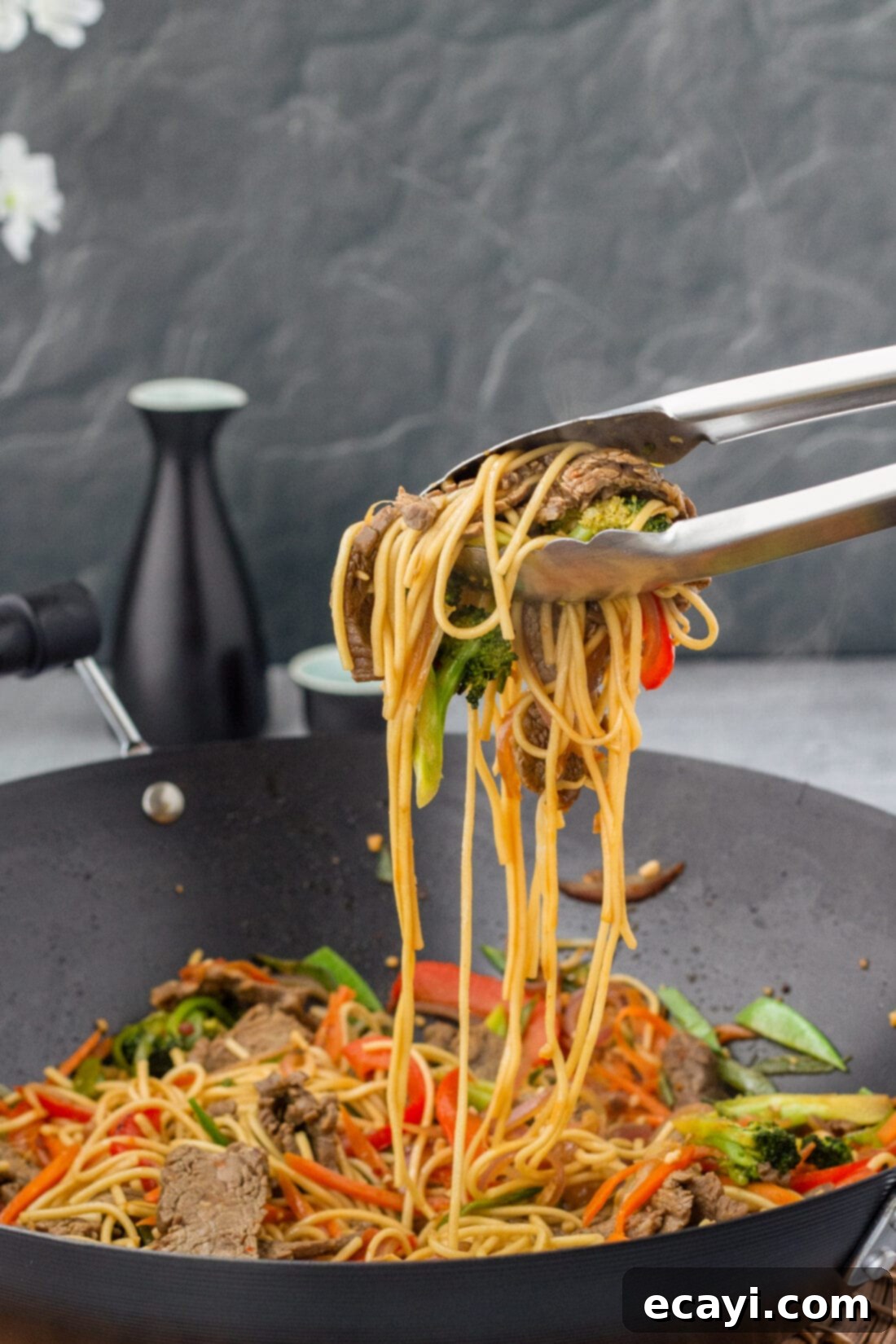
Essential Ingredients for Your Lo Mein
To embark on this culinary journey, you’ll need a selection of fresh produce, quality beef, authentic noodles, and a few pantry staples for the sauce. While the full list with precise measurements and detailed instructions can be found in the printable recipe version at the conclusion of this post, here’s a quick overview of the key components that make this dish truly special:
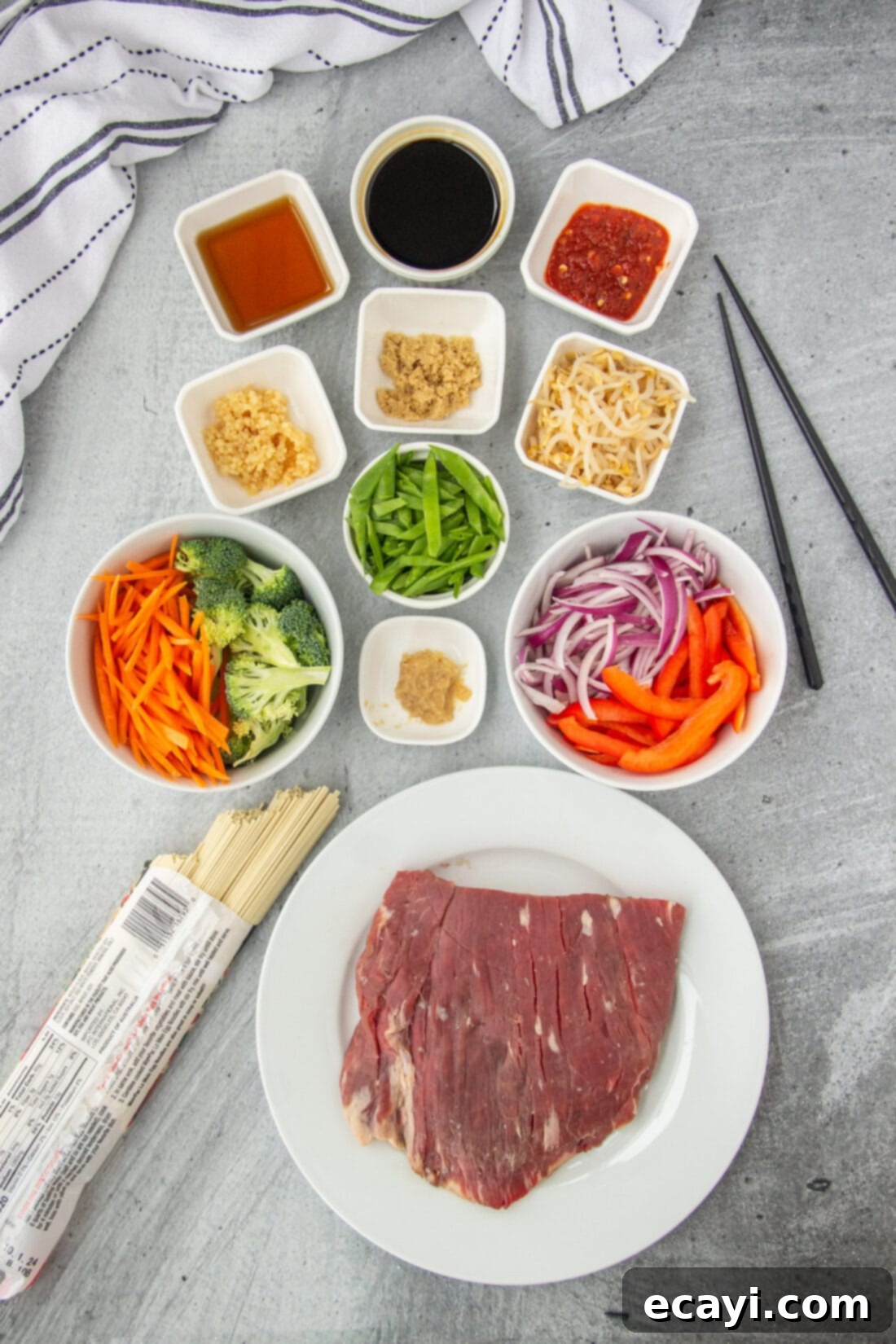
Ingredient Spotlight & Smart Swaps
Understanding each ingredient and knowing your substitution options will empower you to create a truly personalized and delicious beef lo mein. Here’s a deeper dive:
BEEF – Flank steak is our top choice for stir-fries, and for good reason. It’s lean, flavorful, and when sliced correctly, becomes incredibly tender. Other excellent cuts that perform well in stir-fries include sirloin and skirt steak. The key to achieving that melt-in-your-mouth tenderness is to slice the meat very thin, ideally against the grain. Slicing against the grain shortens the muscle fibers, making the cooked meat much easier to chew. A clever trick to make slicing thin easier is to partially freeze the meat for about 30-45 minutes before cutting; this firms it up and allows for cleaner, more precise cuts, especially if your knife isn’t razor-sharp. Additionally, a quick marinade, even just for 15-20 minutes, with a touch of soy sauce and sesame oil, as instructed in the recipe, helps tenderize the beef and infuse it with flavor right from the start.
VEGETABLES – This recipe embraces a colorful and nutrient-rich array of vegetables: carrots, red bell pepper, red onion, snow peas, broccoli, and bean sprouts. Each adds its unique texture, sweetness, or crunch, contributing to a vibrant and satisfying dish. Carrots bring a subtle sweetness and bright orange hue; bell peppers offer a fresh, slightly sweet crunch; red onions provide a mild pungency; snow peas deliver crispness; and broccoli adds earthy notes and florets that absorb the sauce beautifully. For an even more authentic or gourmet Asian flare, consider using broccolini instead of regular broccoli. Broccolini has a slightly sweeter, milder taste and thinner stems. While fresh bean sprouts are fantastic for their crispness, they can sometimes be harder to source. Canned bean sprouts are a convenient and perfectly acceptable alternative; simply drain them well and use the same measurement. Feel free to customize with other stir-fry friendly vegetables like sliced mushrooms, water chestnuts, baby corn, bok choy, or snap peas based on your preference and what’s in season.
NOODLES – The foundation of any great lo mein is, of course, the noodles. We highly recommend seeking out authentic lo mein noodles, which are typically fresh or dried egg noodles designed for stir-frying. They have a distinct chewiness and thickness that holds up wonderfully to the sauce and other ingredients. You can usually find them in the international aisle of larger grocery stores or specialty Asian markets. If authentic lo mein noodles are unavailable, don’t despair! You have several excellent alternatives. Chow mein noodles can work, although they tend to be thinner. Ramen noodles (without the seasoning packet) offer a good texture. Even common spaghetti noodles can be a surprisingly effective substitute in a pinch; just ensure they are cooked al dente so they don’t become mushy when tossed. The goal is a noodle that can absorb the sauce while retaining a pleasant bite.
SAUCE – The homemade lo mein sauce is the heart of this dish, transforming simple ingredients into an explosion of flavor. It’s a beautifully balanced concoction made with aromatic fresh garlic and ginger, which provide warmth and zest. Asian chili garlic sauce introduces a mild, savory heat, while soy sauce forms the backbone with its rich, salty umami profile. Sesame oil adds an unmistakable nutty depth, and brown sugar contributes a nuanced sweetness that perfectly rounds out the savory and spicy elements. The result is a tangy, sweet, savory, and slightly spicy sauce that enrobes every component of the lo mein, making each bite incredibly satisfying.
Step-by-Step Guide to Crafting Perfect Beef Lo Mein
These step-by-step photos and detailed instructions are provided to help you visualize exactly how to make this delicious recipe. For a convenient printable version, complete with all measurements and instructions, please Jump to Recipe at the bottom of this page.
- Prepare the Noodles: Begin by cooking your chosen lo mein noodles (or substitute) according to the package directions. It’s crucial not to overcook them; they should be al dente. Once cooked, drain them thoroughly and rinse immediately with cold water. This rinsing step stops the cooking process and prevents the noodles from sticking together. Set them aside while you prepare the rest of the ingredients.
- Marinate the Beef: In a large bowl, combine the thinly sliced beef (flank, sirloin, or skirt steak) with 1 tablespoon of soy sauce and 1/2 tablespoon of sesame oil. Use your hands or tongs to mix everything thoroughly until each strip of beef is completely coated. This quick marinade tenderizes the meat and infuses it with an initial layer of flavor. Set the bowl aside to let the beef marinate while you prepare the sauce and chop your vegetables.

- Whisk the Lo Mein Sauce: In a small, separate bowl, combine all the ingredients for the lo mein sauce: minced garlic, minced fresh ginger, Asian chili garlic sauce, the remaining soy sauce, sesame oil, and brown sugar. Whisk vigorously until all ingredients are well combined and the brown sugar has dissolved. Set this flavorful sauce aside, ready for action.
- Stir-Fry the Beef: Heat a wok or a large, heavy-bottomed skillet over medium-high heat for a few minutes. You want it to be very hot to achieve a proper sear on the beef. Add the marinated beef strips to the hot wok. There’s no need to add extra oil for this step, as the sesame oil from the marinade will be sufficient. Continuously stir-fry the beef, moving it around the wok, until it is no longer pink and has developed a nice sear, which typically takes about 4-5 minutes. Be careful not to overcrowd the pan; if necessary, cook the beef in batches to ensure it browns rather than steams.
EXPERT TIP – High heat is essential for stir-frying. Ensure your wok is smoking hot before adding the beef to get a quick sear and lock in juices. If you overcrowd the pan, the temperature will drop, and the beef will steam instead of stir-fry, resulting in a less desirable texture.

- Remove Beef, Retain Juices: Using tongs, carefully remove the cooked beef from the wok, transferring it to a clean plate. Crucially, leave any flavorful juices or residue left in the pan – these will add incredible depth to your vegetables. Do not turn off the heat, as the vegetables will be added immediately.
EXPERT TIP – Maintaining a consistently hot wok is key to successful stir-frying. If you feel the need to pause or clean your wok, you can turn off the heat briefly, but be sure to bring it back to a high temperature before adding the vegetables. A hot wok ensures that your vegetables become tender-crisp, not soggy.

- Stir-Fry the Vegetables: To the hot juices remaining in the wok, add the julienned carrots, red bell pepper, red onion, sliced broccoli, and snow peas. Stir-fry constantly for about 3-4 minutes, or until the vegetables are tender-crisp. They should still have a slight bite and vibrant color.

- First Sauce Addition: Pour half of the prepared lo mein sauce over the hot vegetables in the wok. Continue to stir-fry for another 2 minutes, ensuring the sauce evenly coats the vegetables and starts to thicken slightly. The aromas will be incredible at this stage.

- Combine Beef and Remaining Sauce: Return the cooked beef strips to the wok, joining the sauced vegetables. Pour the remaining half of the lo mein sauce over the beef and vegetables. Stir-fry for an additional 2-3 minutes, tossing everything together to ensure the beef is reheated and all components are thoroughly coated in the rich sauce.


- Add Bean Sprouts: Finally, add the drained bean sprouts to the wok. Stir-fry for just one more minute. Bean sprouts are delicate and only need a very quick toss to warm through and maintain their crisp texture.

- Toss with Noodles and Serve: Turn off the heat under the wok. Add the cooked and drained lo mein noodles to the mixture of beef and vegetables. Using tongs, gently toss everything together until the noodles are fully incorporated and coated with the savory sauce. Serve your homemade Beef Lo Mein immediately, while it’s hot and fresh!
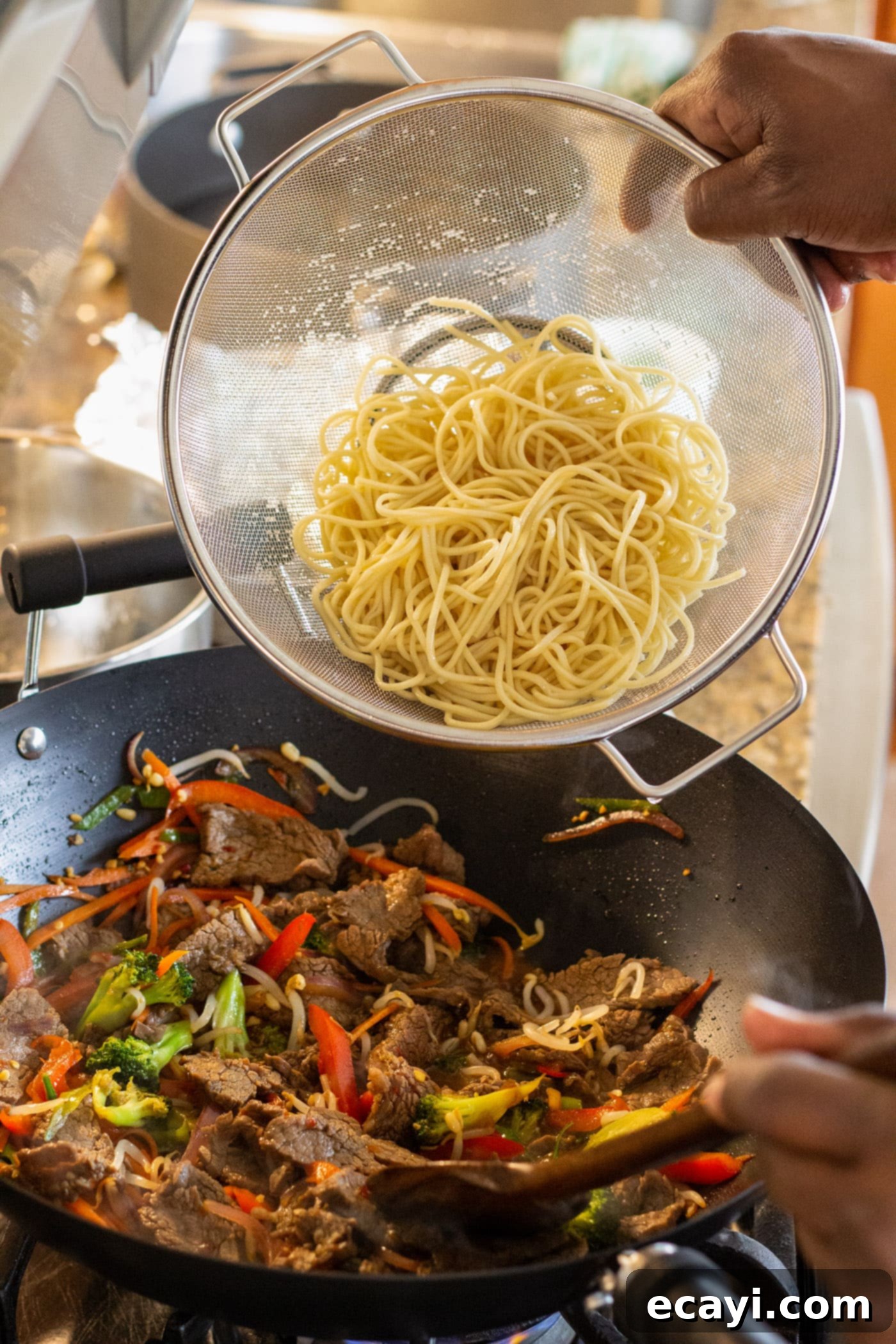
Frequently Asked Questions & Expert Tips for Success
Storing your leftover beef lo mein correctly is key to enjoying it later. Place any cooled leftovers in an air-tight container and keep it in the refrigerator. It will stay fresh and delicious for approximately 3-4 days. To reheat, you can microwave it in short bursts, stirring occasionally, or for best results, gently warm it in a skillet over medium heat with a tiny splash of water or broth to help rehydrate the noodles and sauce.
Absolutely! To streamline your cooking process, you can definitely prep some ingredients in advance. Slice your beef and marinate it a few hours or even overnight in the refrigerator. Chop all your vegetables and store them in separate containers in the fridge. You can also mix the lo mein sauce components ahead of time and keep it refrigerated. Having everything prepped (mise en place) makes the actual stir-frying process incredibly fast and stress-free.
Several factors contribute to tender stir-fry beef. First, choose the right cut like flank, sirloin, or skirt steak. Second, always slice the beef very thinly against the grain. Third, don’t skip the initial marinade with soy sauce and sesame oil. Finally, cook the beef quickly over high heat and avoid overcrowding the wok, which can cause the meat to steam and become tough. Cook in batches if necessary.
The spice level can be easily customized to your preference. If you prefer a milder dish, reduce the amount of Asian chili garlic sauce, or omit it entirely. For those who love heat, you can increase the chili garlic sauce, add a pinch of red pepper flakes with the vegetables, or drizzle some sriracha over the finished dish.
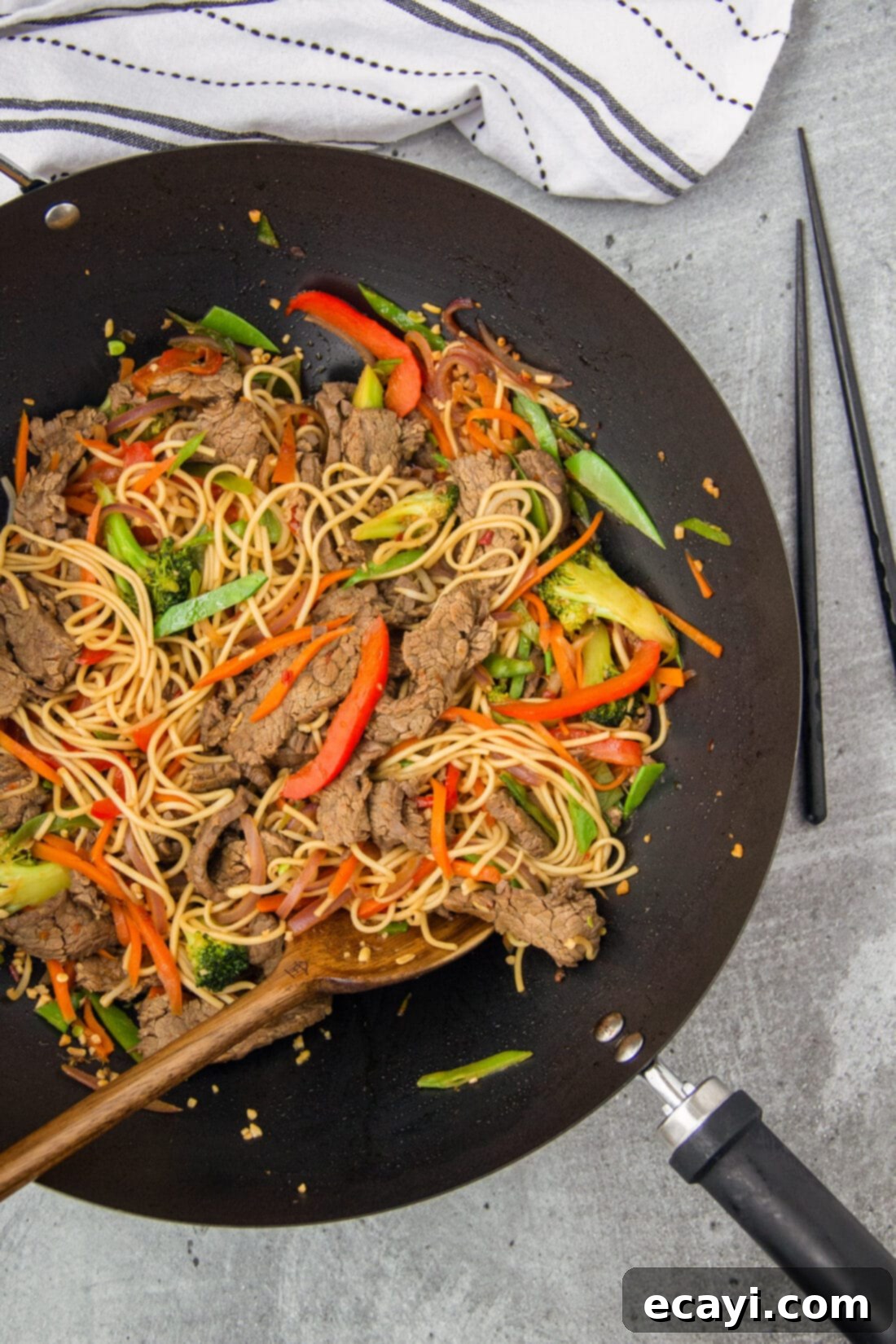
Delightful Serving Suggestions
Your freshly prepared beef lo mein is a complete meal on its own, packed with protein, vegetables, and satisfying noodles. However, you can elevate the dining experience with a few thoughtful garnishes or complementary side dishes. Optionally, serve your beef lo mein with a sprinkle of toasted sesame seeds for an added nutty crunch and visual appeal, or garnish with thinly sliced green onions for a fresh, mild oniony flavor. For a truly authentic Chinese takeout experience, a bowl of warm egg drop soup is one of my all-time favorite sides to pair with almost any Chinese dish. Other excellent companions include crispy vegetable spring rolls, pan-fried dumplings, or even a simple, refreshing cucumber salad. Enjoy this flavorful dish warm and fresh from the skillet – it’s best when served immediately after tossing!
Explore More Asian-Inspired Dishes
If you loved this beef lo mein recipe, you’ll surely enjoy exploring other delicious Asian-inspired dishes from our collection:
- Szechuan Beef
- Sesame Chicken
- Egg Roll in a Bowl
- Moo Goo Gai Pan
- Honey Walnut Shrimp
- Vegetable Lo Mein
I love to bake and cook and share my kitchen experience with all of you! Remembering to come back each day can be tough, that’s why I offer a convenient newsletter every time a new recipe posts. Simply subscribe and start receiving your free daily recipes!
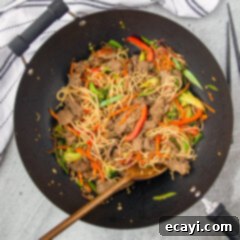
Beef Lo Mein
IMPORTANT – There are often Frequently Asked Questions within the blog post that you may find helpful. Simply scroll back up to read them!
Print It
Pin It
Rate It
Save ItSaved!
Ingredients
- 1 pound flank steak sliced thin
- 1 Tablespoon soy sauce
- ½ Tablespoon sesame oil
- 1 cup carrots julienned, 3 ounces
- 1 cup red bell pepper julienned, 3.5 ounces
- 1 cup red onion julienned, 3 ounces
- ½ cup snow peas ends trimmed and julienned, 2 ounces
- 1 cup broccoli sliced thin, 2.75 ounces
- ½ cup canned bean sprouts drained, 2 ounces
- 3 ½ ounces lo mein noodles cooked according to package directions
Sauce
- 1 Tablespoon minced garlic
- 1 teaspoon minced fresh ginger
- 1 Tablespoon Asian chili garlic sauce
- 7 Tablespoons soy sauce
- 2 Tablespoons sesame oil
- 2 teaspoons brown sugar
Things You’ll Need
-
Wok
-
Wooden spoon
-
Tongs
Before You Begin
- We’ve used flank steak as it’s our favorite for stir-fries due to its flavor and tenderness when properly prepared. Other excellent cuts that work well are sirloin and skirt steak. Always be sure to slice the beef very thin for optimal results.
- To make slicing the beef thin much easier and safer, partially freeze the meat for about 30-45 minutes. This firms it up, allowing for cleaner cuts. It’s also crucial to slice the meat against the grain, which shortens the muscle fibers and ensures a more tender cooked meat.
- While fresh bean sprouts offer a superb crunch, they can sometimes be more difficult to find. Canned bean sprouts are a convenient and perfectly good alternative; simply drain them thoroughly and use the same measurement.
- For an enhanced and slightly more refined Asian flavor profile, consider substituting regular broccoli with broccolini, which has a milder, sweeter taste and more delicate texture.
- To store any leftover Beef Lo Mein, place it in an air-tight container and keep it refrigerated. It will remain delicious for 3-4 days. For best reheating, use a skillet over medium heat with a splash of water.
Instructions
-
Cook the noodles according to package directions until al dente. Drain, rinse with cold water to stop cooking and prevent sticking, then set aside.
-
In a large bowl, pour 1 tablespoon soy sauce and 1/2 tablespoon sesame oil over the thinly sliced meat. Mix thoroughly until the meat is completely coated. Set aside to marinate.
-
To make the sauce, in a small bowl, stir together all sauce ingredients: minced garlic, minced fresh ginger, Asian chili garlic sauce, the remaining soy sauce, sesame oil, and brown sugar. Whisk until well combined. Set aside.
-
Heat wok over medium-high heat for a few minutes until very hot. Add the marinated beef to the wok and constantly stir-fry until the meat is no longer pink and is lightly browned, about 4-5 minutes.
TIP: No additional oil is typically needed for this step as there is already sesame oil on the meat. Avoid overcrowding the wok to ensure proper stir-frying.
-
Using tongs, remove the cooked beef from the wok, leaving any remaining flavorful juices in the pan. Do not turn off the heat as you will be adding the vegetables immediately.
TIP: If you need a moment, you can turn off the heat, but ensure the wok is brought back to a high temperature before adding the vegetables for optimal stir-frying.
-
To the juices in the wok, add the carrots, red bell pepper, red onion, broccoli, and snow peas. Stir-fry until the vegetables are tender-crisp, about 3-4 minutes. They should still retain some crunch.
-
Pour half of the prepared lo mein sauce over the hot vegetables in the wok. Stir-fry for 2 minutes, ensuring the vegetables are well coated and the sauce begins to thicken slightly.
-
Add the cooked beef back to the wok with the vegetables. Pour the remaining sauce over the meat and vegetables. Continue to stir-fry for 2-3 minutes, tossing everything together to combine and reheat the beef.
-
Add the drained bean sprouts to the wok. Stir-fry for one more minute, just enough to warm them through while maintaining their crispness.
-
Turn off the heat. Add the cooked and drained lo mein noodles to the wok. Using tongs, gently toss with the meat and vegetables until the noodles are fully coated with the sauce. Serve immediately and enjoy your homemade beef lo mein!
Nutrition
The recipes on this blog are tested with a conventional gas oven and gas stovetop. It’s important to note that some ovens, especially as they age, can cook and bake inconsistently. Using an inexpensive oven thermometer can assure you that your oven is truly heating to the proper temperature. If you use a toaster oven or countertop oven, please keep in mind that they may not distribute heat the same as a conventional full sized oven and you may need to adjust your cooking/baking times. In the case of recipes made with a pressure cooker, air fryer, slow cooker, or other appliance, a link to the appliances we use is listed within each respective recipe. For baking recipes where measurements are given by weight, please note that results may not be the same if cups are used instead, and we can’t guarantee success with that method.
